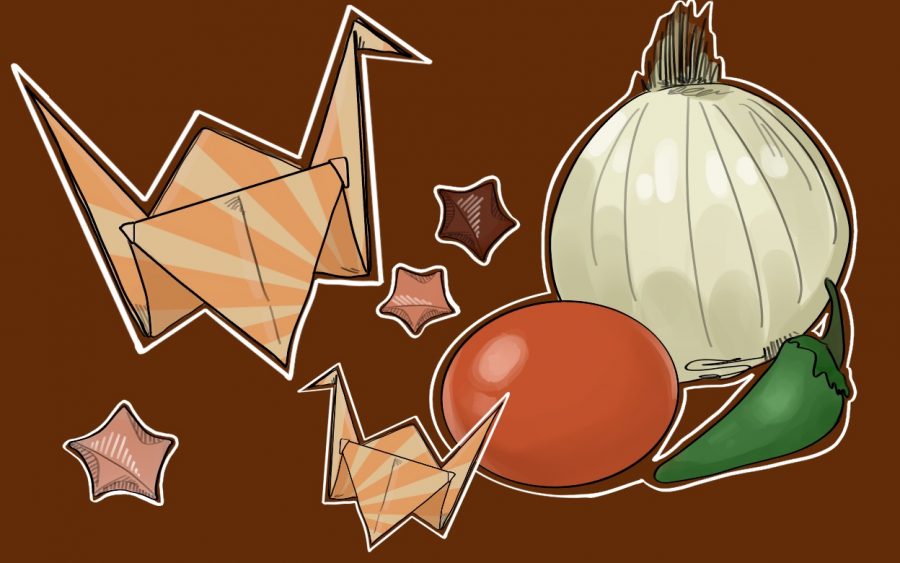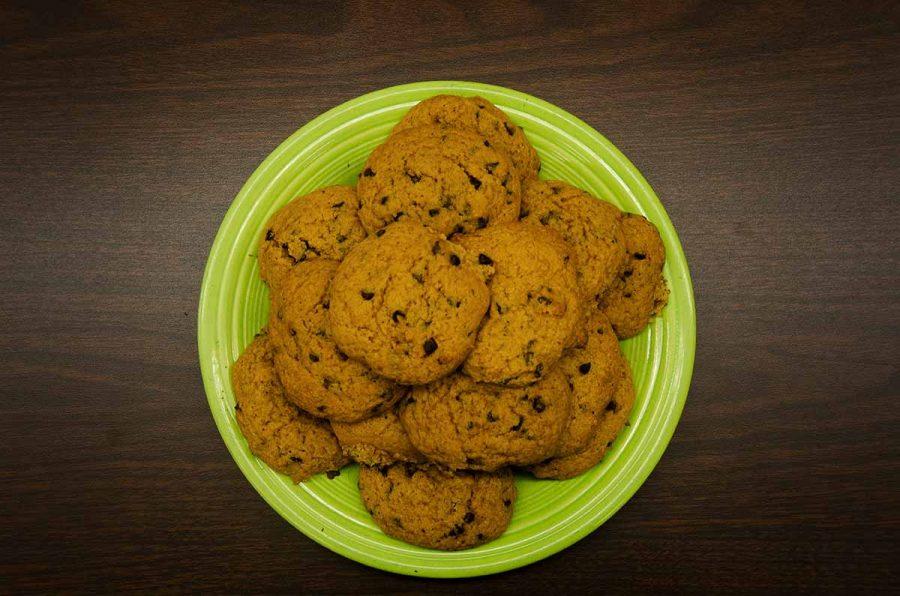My insatiable need for food consumes me every day. I hunger to indulge in a feast as the thought of being full gnaws and churns inside me until I temporarily satisfy my unrelenting appetite. Like a moth drawn to light, however, the ugliest parts of gluttony always return to haunt me.
Throughout elementary school, I wrestled with satiating my stomach’s cravings. I constantly ate until I threw up because my body physically couldn’t handle another bite. I could not feel how full I was, and even if I could, I didn’t seem to care. My parents ceaselessly worried while I continued to ask for one serving after another.
Now, I still struggle to hold myself back from grabbing any and all consumable items in front of me, although I have not seen a professional about this matter. From little Cotton Candy grapes to greasy, salty chips, I don’t discriminate with what I find and shovel into my mouth.
Through the stressful workload of school and a busy schedule outside of academics, I learned my problem lies in stress eating. Also known as emotional or comfort eating, I feel compelled to scarf down anything edible whenever I’m under lots of pressure from any number of factors. I, however, am not a special case; around 37 percent of teenagers said they intake food in excess regularly, and 24 percent of teens reported stress eating. It’s not right for such young people to face this kind of concern, especially when it leads to a rabbit hole of other health issues. These include steering a person into a prisoner of kidney failure, heart failure and dangerous sleep apnea, if inadequate eating habits persists.
Comfort eating can have disastrous effects on the body. In a time when teens are susceptible to unfavorable habits that take every ounce of willpower to overcome, routinely having more to eat than needed whenever and wherever available make controlling impulsive urges even more difficult. I never want my voracious appetite to overpower all other thoughts, yet delicious treats linger on my mind, and, if I so choose, I could walk into the kitchen to make something I’ll gobble down instantly.
One serious side effect that comes after a binge on food is the occasional purging. Some days, when my willpower bows in submission, I will indulge myself in many unhealthy, unfulfilling snacks until the guilt of consuming all of these countless calories walks me back to the restroom at gunpoint, demanding I throw it back up. I tell myself, ‘This will be the last time; I will stop eating so much. I will stop regurgitating in the bathroom. I will stop this compulsory nonsense with so vital an ingredient for life,’ but the vile thoughts remain in my stomach. The cycle repeats.
Approximately one to three percent of teens suffer from bulimia nervosa each year in America. Bulimia warps people’s body image into a horrendously fat version of themselves, compelling them to binge eat shortly before forcing themselves to heave up every last bit of what they just ate. While this is the most common way to purge, some bulimics also purge by overexerting themselves through extreme exercise or taking laxatives. Mostly, however the disorder’s attacks zero in on a person’s insecurities in the shape and size of their bodies, pressuring them to get rid of healthy parts of themselves.

At the other end of the warfare with eating disorders is the battle against anorexia nervosa. People are sometimes diagnosed with both bulimia and anorexia, where both conditions consume an individual’s mind so they persistently think about feeding. Anorexia plagues a person’s brain so that he or she is obsessed with eating less and growing skinnier, even when he or she is well below a healthy or average weight based on the individual’s age and height. Approximately 1-4.2 percent of women and 0.3 percent of men live with anorexia sometime in their life. Only one-third of people will seek professional help for their condition, while four percent will die from complications and other effects of anorexia, including suicide. While I have never experienced hospitalizations or anorexia, in general, there are days where I wrote or hit myself out of hatred, misery and fear. I despised my body for the way it looked, and I tore myself apart for adding more calories to my diet.
Recently I began using a calorie counting app to help control my impulsive thoughts. While this is not necessarily the best way to keep my purging under control, it reassures me that I am not overeating, which means there is no reason to get rid of what I consumed. I also know I can routinely check my itch for grabbing more snacks by utilizing this because it reminds me of the goal to not do so. In addition, however, the app serves as a mockery of sorts whenever I use my phone, as it evokes past memories of how I even got to downloading the program in the first place. Still, like a broken clock, it sits on the front screen of my phone, nudging me to march forward through relapses of my food obstacles.
Ways to conquer eating disorders vary from person to person, although it is always a lasting struggle. From time to time, I still relapse into old, detrimental habits — but the other days where I overcome an impulse to scarf down or purge a meal tells of my winning a greater fight against an invisible enemy.
If you would like to talk to someone about an eating disorder, text 741741 for a crisis textline (24/7 availability), or call 1-800-931-2237 for the National Eating Disorders Association (available from 9 a.m. to 9 p.m. ET; Fridays from 9 a.m. to 5 p.m. ET.)
How have you tried to deal with your personal problems? Let us know in the comments below.
























































































William Yoo • Nov 21, 2019 at 12:33 pm
The exposure of such a sensitive, vulnerable side of this story makes it so much more special